The first batch of Model Ys have arrived at Fremantle Port today in preparation for the first WA deliveries over the next few weeks.
Nearly 800 new Teslas so far this quarter
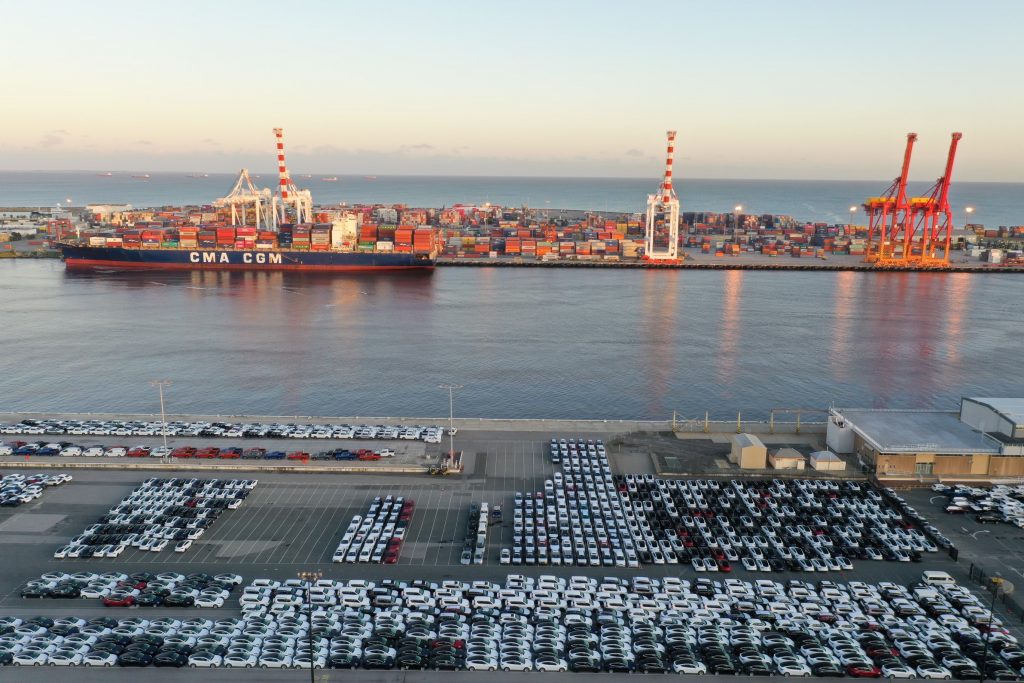
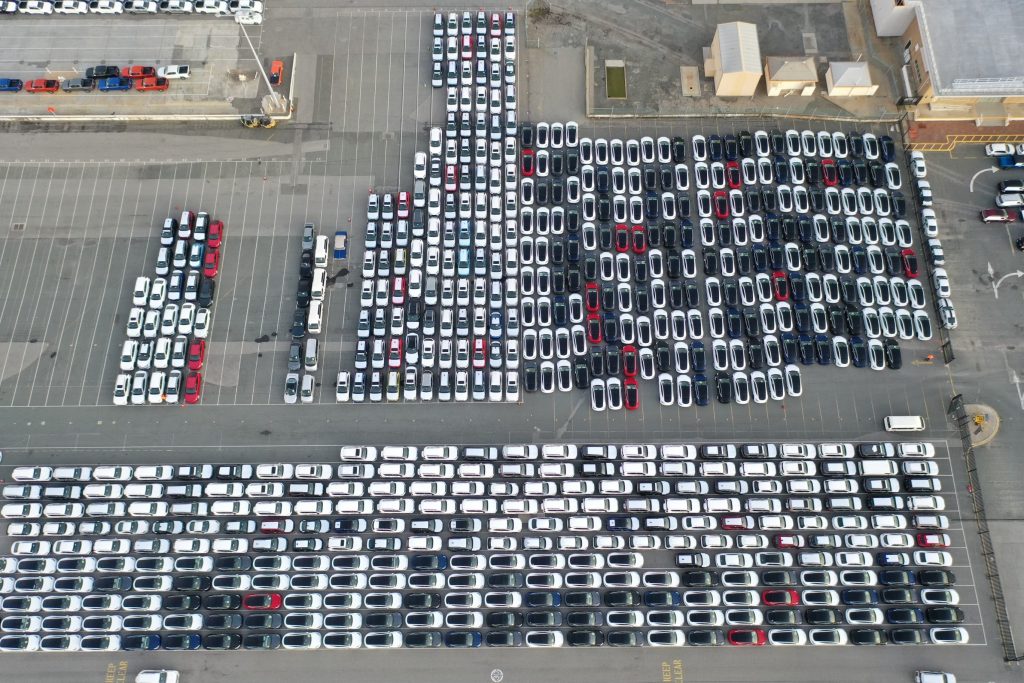
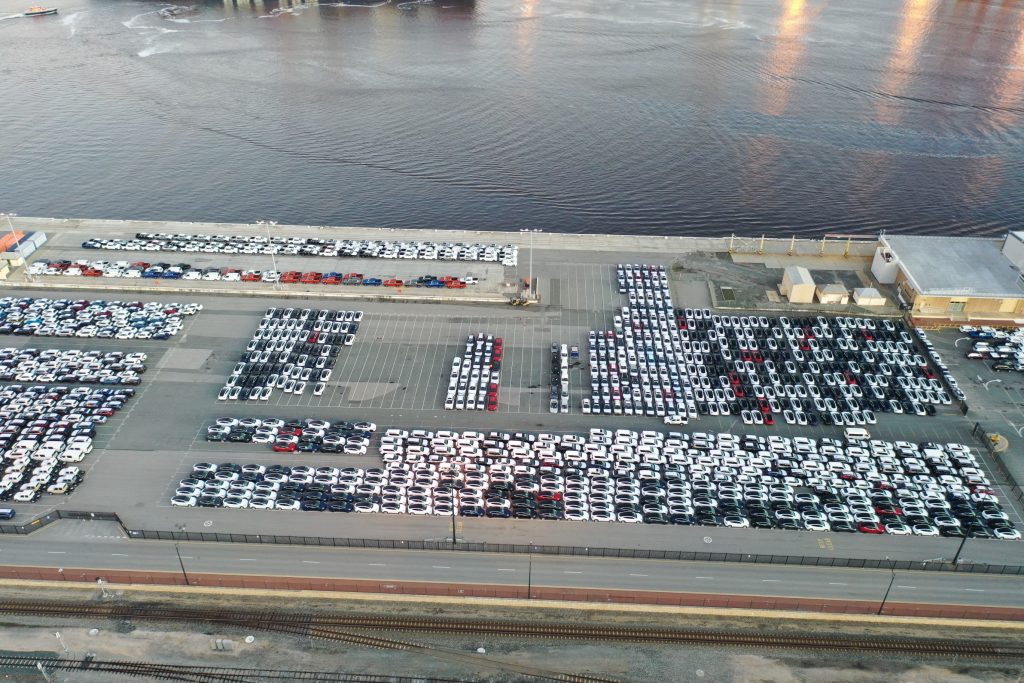
The first batch of Model Ys have arrived at Fremantle Port today in preparation for the first WA deliveries over the next few weeks.
Nearly 800 new Teslas so far this quarter








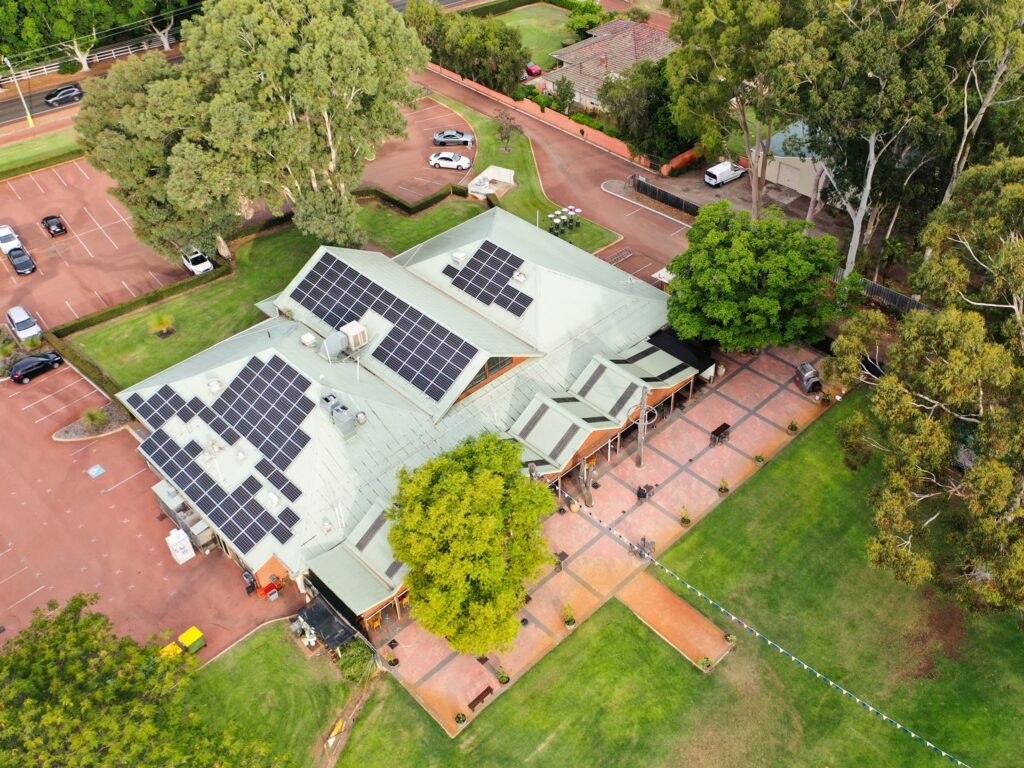
Everyone is invited to come along to the meetup at Valley Social (formally Elmar’s in the Valley) 8731 West Swan Rd, Henley Brook from 1.00PM onwards for a meal, drink and of course a chat about Tesla and EVs. Everyone is welcome regardless of the car you currently drive but EVs will get to park on the lawn behind the restaurant near the VIP Marquee seating. Please use the driveway around the left of the restaurant.
It’s an American BBQ inspired menu with lots of food and drink options. For those who are running low on electrons there will be limited free trickle charging available.
The event is open to everyone including those who have never seen a Tesla before. Non-Teslans please ask nicely and a club member might just take you for a spin!
It’s a great opportunity to meet club members and to see the cars in the flesh which we are all passionate about. It’s also a great way for new owners to learn more about their cars and to share in the vast pool of knowledge gained by other members.
Our next casual meetup is Sunday 7 August 2022 at 11:00am at:
The Kewdale Tavern, 139 Kewdale Rd, Kewdale

Casual meetups are open to everyone including those who have never seen a Tesla before.
It’s an ideal opportunity to meet club members and to see the cars in the flesh which we are all passionate about.
It’s also a great way for new owners to learn more about their cars and to share in the vast pool of knowledge gained by other members.
We hope to see you there and look forward to chatting about all things Tesla.
After a brief break to stay cautious, this month’s casual meetup is tonight, Wednesday 6 July 2022 at 6:30pm at:
The Mighty Quinn Tavern, 112 Wanneroo Road, Yokine

Casual meetups are open to everyone including those who have never seen a Tesla before.
It’s an ideal opportunity to meet club members and to see the cars in the flesh which we are all passionate about.
It’s also a great way for new owners to learn more about their cars and to share in the vast pool of knowledge gained by other members.
We hope to see you there and look forward to chatting about all things Tesla.
The above question gets asked on a regular basis on Tesla forums and there’s no perfect answer, what I will say with certainty is an accessory that’s very useful for one Tesla owner could be completely useless for you and vice versa. As the Grail Knight says “Choose wisely”.
To focus this discussion I’ll break it down into 2 areas – Charging assistance and finally Exterior and Interior Accessories.
Charging assistance – Charging also breaks down in to two areas, Home charging and Public/Travel charging. The set up you need at home depends on the average distance you expect to drive per week and if you’re planning to make use of home solar or the Synergy EV plan that’s available between 11.00pm and 4.00am. If you wish to ask a question about a home charging set up on any TOCWA social media make sure you provide as many details as possible for a faster and more accurate answer. Public or travel charging accessories/cables is often determined by where you you expect to charge in public areas close to home and the locations and frequency you expect to drive in country areas. Sadly there is not yet one single charging cable to suit all occasions, the good news is TOCWA members get access to loan charging cables until you’re confident you know which cable suits you best.
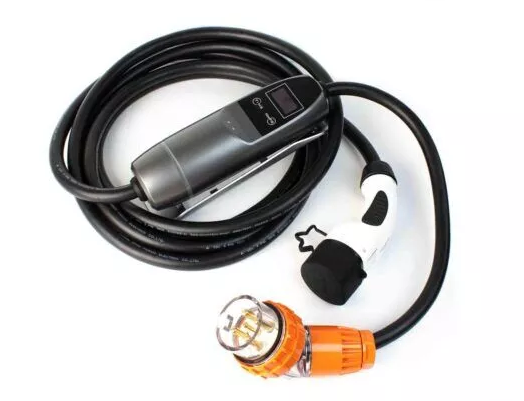
Exterior and Interior accessories – There’s no shortage of businesses in Western Australia selling Tesla accessories such as after market wheels, paint protection, window tinting and much more, there’s also no shortage of Tesla owners who’ve used these services, the most obvious advice I can give you is meet up with one those Tesla owners that have had paint protection, window tinting or other product installed for more than 12 months, check the quality with a keen eye and ask lots of questions.
Some after market additions can be very useful over the life of the car, some can be a huge burden, take the time to make the correct decision.
Don’t forget TOCWA’s Ask Us Anything every Wednesday evening from 7.30pm for some useful advice on charging and accessories and/or check out some articles on this website.
From the 14th of March 2019, the day Elon Musk unveiled his new Tesla sneakers and then the Model Y at the Tesla Design Studio in Hawthorne California, Australians have been wondering when the car that is destined to become the world’s bestselling passenger vehicle will become available down under.
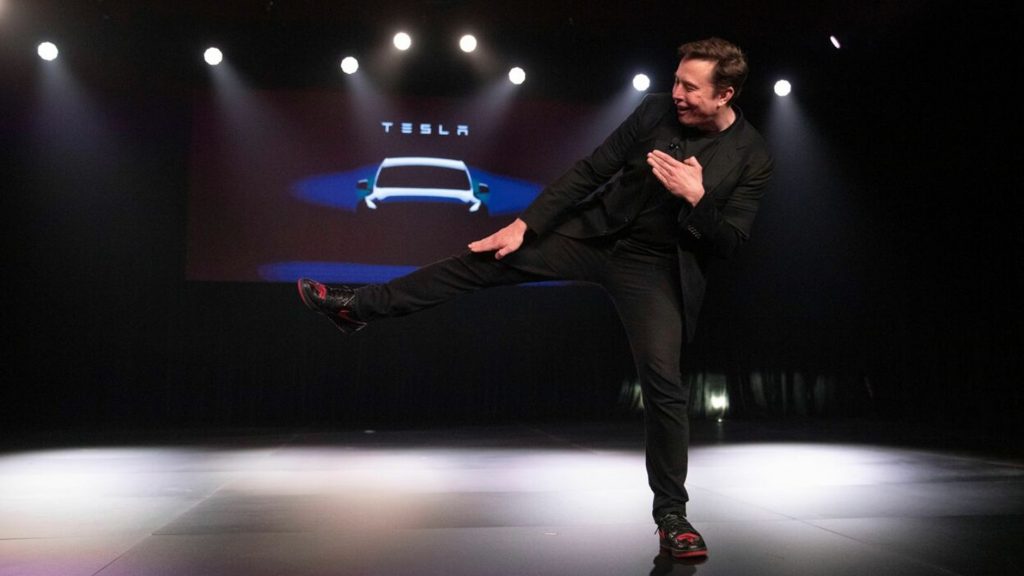
It was great to see production begin in California’s Fremont factory in January of 2020 with deliveries following only a couple of months later on the 13th of March. We then had little choice but to spend almost the next year and a half eagerly watching YouTube videos of ecstatic new Model Y owners posting their reviews, and we were all buoyed when we saw right-hand drive orders open in countries like Hong Kong on 2nd of July 2021 and later in the UK on 15th of October last year. We were also glad to see the Model Y fully approved by Australian regulators in September 2021.
When the Australian order page briefly went live on 9th of April 2022, Aussie EV fans were on tenterhooks. Some Tesla enthusiasts such as TOCWA Chairman Rob Dean and his wife Robin got a chance to almost place an order before the reservation page was taken offline but not before they got a chance to take a screen shot. (As reported by The Driven, there was also at least one Australian who managed to pay a deposit that weekend, but their money was later refunded and the order cancelled.)
Rumours and speculation ensued but finally this morning the well-worn ‘Stay Updated’ button was finally replaced with the long-awaited invitation to ‘Order Now’. So yes, it’s finally happening, Australians can now place their Model Y reservations!

To begin with, Australians are being offered two variants. The entry level Rear-Wheel Drive (which used to also be referred to as the Standard Range Plus) but now known as simply the ‘Model Y’ and the top of the range Performance. Both versions will be made in Shanghai, and they’ll initially only be available in the 5-seat configuration.
The Model Y shares approximately three quarters of its parts with the Model 3 and to the superficial eye it looks almost identical but there are differences. Although both cars share the same platform and powertrains, being an SUV, the Model Y is heavier and bigger in all three dimensions. It is about 41mm wider, 56mm longer and 183mm taller with about 27mm more ground clearance at about 167mm. That said, the Performance with its 21’’ Überturbine wheels will ride a little lower.
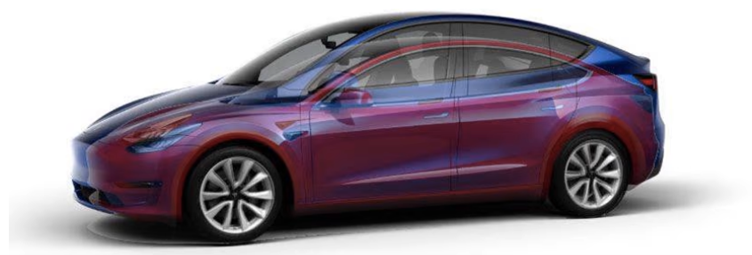
As one would expect, the Model Y has more leg room and it’s easier to get in and out thanks to its higher seating positions. I found this to be a handy YouTube video with a real-world comparison between the rear seat leg room of the 3, the Y and the Model X. You can also refer to TOCWA’s very own Grumpy Old Man’s YouTube video at the 4’35” mark. Nigel is currently in the UK taking the Model Y through its paces.
There are also other differences, the most obvious being the Model Y’s hatchback versus the Model 3’s sedan boot design. Additionally, the Model Y’s three rear seats can recline into three positions, and they can also fold down individually compared to the 60:40 split in the M3. There’s also a handy button in the boot of the Model Y enabling the rear seats to automatically fold down and there’s also a hidden manual rear door release. The factory glass tinting on the Model Y is also different in that it runs all the way to the end while the Model 3 tapers off about 60cm from the bottom. Some of these features are demonstrated in this YouTube Video by Tesla Raj starting at the 9’35”mark.
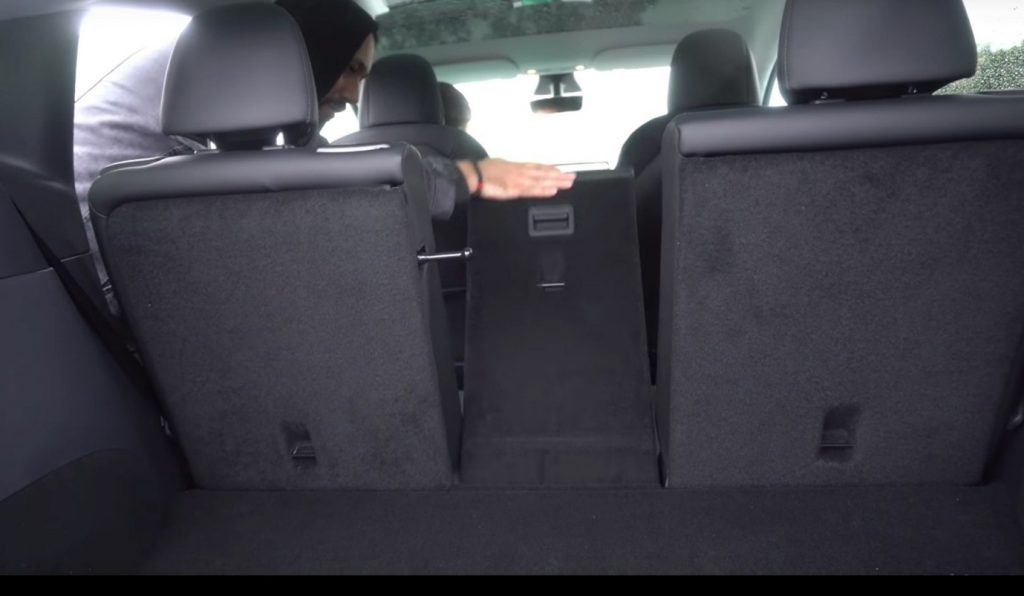
The Model Y also has an additional smaller boot well or sub boot as can be seen in this video at the 5’30” mark and the front boot or frunk is about three inches deeper. There are also two side compartments in the boot as opposed to just the left one in the Model 3. As one would expect, the Model Y has considerable cargo volume, almost 50% more than the Model 3, with the M3 specified at 649 litres and the MY at 971 litres with 5 passengers, or 2,158 litres with just a driver and front passenger.
In terms of acceleration, the Model Y is only a little less lively at 3.7 seconds versus 3.3 seconds for a 0-100km/h sprint for the Performance models and 6.9 compared to 6.1 seconds for the entry level Rear Wheel Drive versions.
Being a larger and heavier car, the Model Y Performance is rated at 514km of WLTP range which is 33km less than the M3P. The Rear-Wheel Drive is rated at 36km less at 455km. When it comes to real world range, however, the EPA standard is a closer approximation with the MYP rated at 488km. Furthermore, this range will be reduced on rough country roads where there is little opportunity to use regenerative braking or when driving in the rain, in cold weather, going up hills, against a headwind or towing. Speaking of towing, the Model Y should be rated at 1.6 tonne braked or 750kg unbraked, as reported here by Bridie Schmidt in The Driven.
As one would also expect, the Model Y is more expensive, however, as I have touched on previously in this article, the Total Cost of Ownership is what is important rather than just the sticker price.
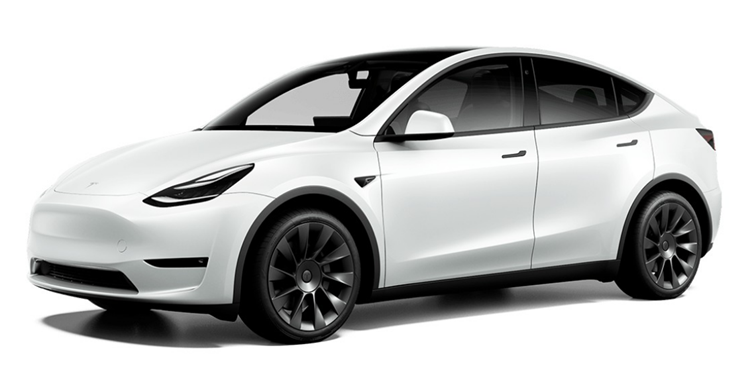
To check prices and delivery time frames see the Australian order page and if you like what you see don’t hesitate to reserve what in the next 3-5 years I’m tipping will become Australia’s bestselling car, first by revenue and then by volume. Considering that EVs account for only about 2% of Australia’s new car sales and the world is currently gripped by supply chain bottlenecks, I realise it’s a big call but to double down further and to be clear, I’m not saying it will just be the best-selling electric car, or the bestselling SUV, or the bestselling car in any other segment, I expect either the Model Y or the Cybertruck to become Australia’s best-selling car, period. With Australia accounting for less than a fraction of a percentage point of Tesla’s global sales volumes, the harder question is whether Tesla will have a global best seller before it tops the rankings in Australia or vice versa.

(13 June’22: the range estimates in the 3rd last paragraph of this article were corrected to correctly reflect the figures as per the Tesla website.)
Having recently come back from a 1,000km round trip, towing a trailer behind our Tesla Model 3, I’ve learned two things. Firstly, we need a denser network of reliable fast DC chargers in country Australia and secondly but equally importantly, we also need to rethink the design of electric vehicle (EV) charger configurations to allow EVs towing trailers to also be able to plug-in. We can refuel internal combustion engine (ICE) cars while towing a trailer, boat, caravan, or horse float, so why not an EV?
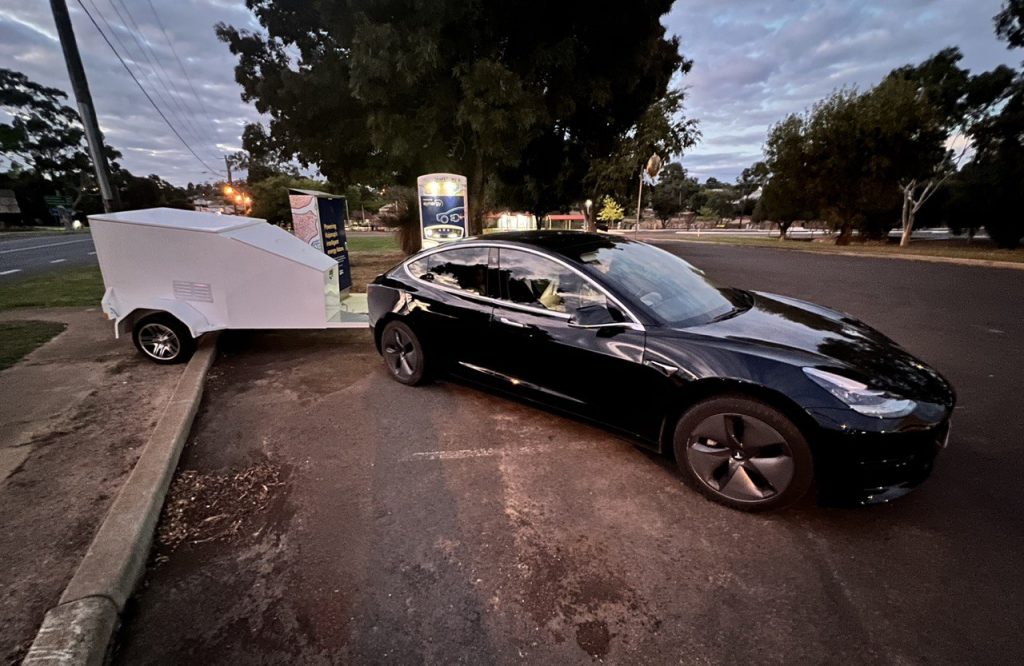
If EV demand figures are anything to go by, consumers love EVs, both around the world as well as in Australia and we also love towing our trailers, caravans, boats and even horse floats but how are we going to go combining the two? How are we going to go using our EVs for towing?
With EVs accounting for only about 8.3% of global new light car sales in 2021, there aren’t yet many two-EV households, therefore for the time being at least, when a two-car family buys an EV, it is mainly bought as a second city car, with an ICE four-wheel drive SUV or ute/truck usually the designated towing vehicle. As a result, most manufacturers have targeted their EV sales at this second car market but with EVs growing at a rapid pace, (the 8.3% global figure was a 108% increase on 2020 numbers), contrary to many projections, it may only be 3-4 years before one in every two cars sold around the world is an EV. Furthermore, with 89% of Tesla owners saying they’ll replace their car with another Tesla, many more two-EV households, such as ours, may not be that far away, which means at least one of the EVs may need to be a capable towing vehicle. To put it another way, as Tesla points out, “consumers do not buy cars that can meet most of their driving needs; they buy a car that meets all their driving needs.”
This fact is not lost on car makers several of whom have introduced impressive off-road and towing vehicles including the Rivian R1T, GMC Hummer EV, Ford F-150 Lightning, Tesla Cybertruck, Chevrolet Silverado, Toyota Hilux EV, Ram 1500, Lordstown Endurance, Bollinger B2, Fisker Ocean SUV, LDV Maxus New EV, Canoo EV Pickup and others.
Whether we’ll see any of these models in Australia anytime soon remains to be seen, however, in the absence of a national EV policy and with Australia having become a dumping ground for dirty and inefficient EVs due to a lack of vehicle and fuel emission standards, it is no surprise that car manufacturers have been slow in introducing their EV models to our shores. We’re therefore limited to only a fraction of the models available in other markets. As an example, Europe has around 120 plug-in hybrid (PHEV) and over 90 pure EV (PEV or BEV) models on the market. In contrast, with less than 30 models available in our market of which only about a dozen are fully electric, prospective Aussie EV owners are confined to about a quarter of the PHEV selection and less than a sixth of the PEV options. That said, however, with deliveries having already began in some right-hand drive markets, the arrival of the Tesla Model Y in Australia seems imminent. The Model Y should be able to tow up to 1,588kg on the 19” or 21” wheels and when the Cybetruck becomes available here, it may well become the ultimate towing vehicle with an unrivalled 6-tonne towing capability. In the meantime, the Model X is also capable of towing up to 2,300kg.
With so many towing capable EVs inevitably hitting the market, we need to ensure these cars can conveniently charge when towing. At the moment, the majority of EV chargers are mounted against a curb requiring most EVs to reverse up against the curb or some to drive-in forward. Neither method works if towing a trailer. There were technical and economic reasons why some sites were initially configured this way, but one can’t help think that many other sites were designed in this manner for no other reason other than because this is the way things have been done in the past. Five examples are pictured below.
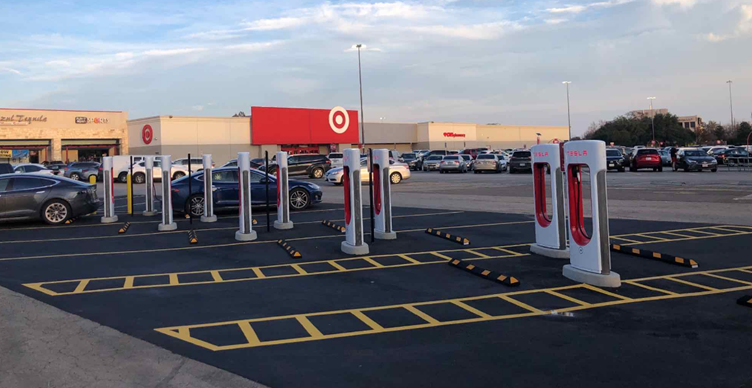
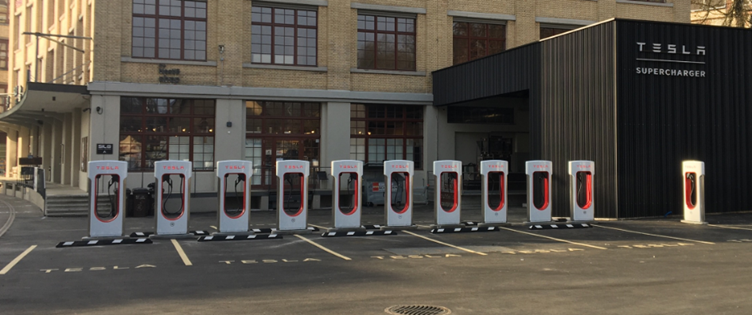
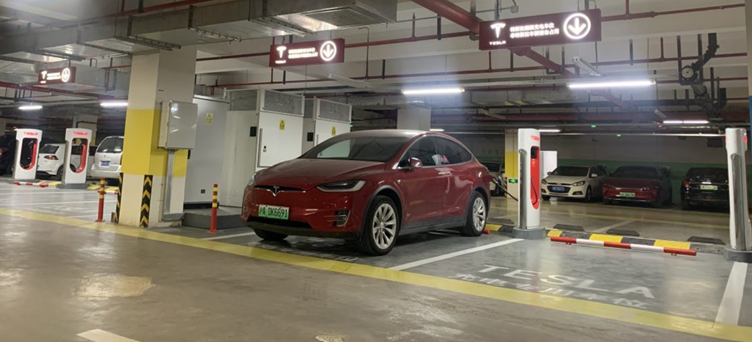
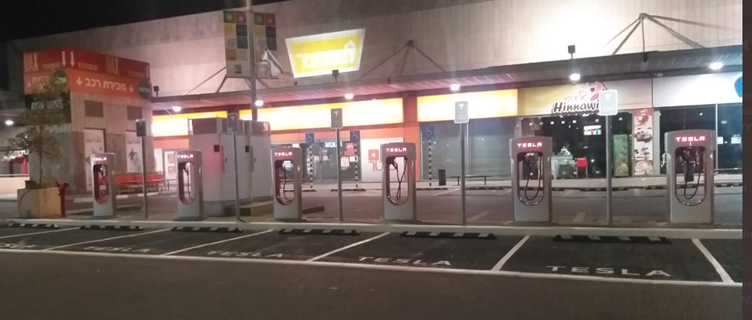
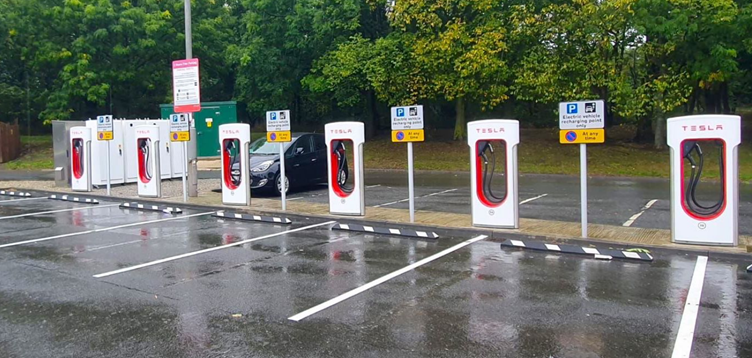
I can’t see the above configurations being any more cost effective than what I call a “drive-through” layout. A drive-through configuration as found in most petrol and gas stations doesn’t require the cars to reverse or forward park against a curb or wall but instead allows them to enter at one end and exit at the other while also allowing for EVs towing a trailer to plug-in.
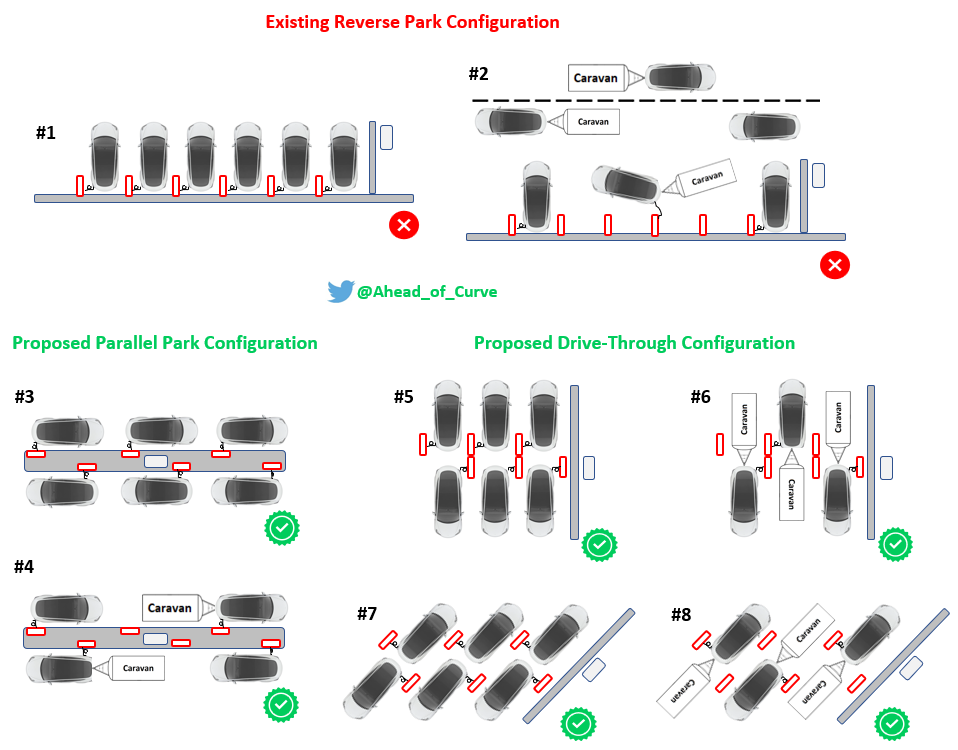
As can be seen from the graphic above, in contrast to how the stalls are mostly configured now, there are numerous advantages to a ‘drive-through’ configuration. Apart from a more efficient design, a drive-through configuration makes for easier parking when towing while also giving non-towing cars a choice to either reverse-park as is the case now or forward park, particularly when two or more bays are free. If there is at least one towing vehicle being charged, the drive-through layout allows for more towing EVs as well as non-towing EVs to be charged simultaneously. As figure #2 shows, and as can be seen from the photos below, a car with even a small trailer needs to block-off four other charging bays in order to awkwardly manoeuvre into a position where an almost fully extended charging cable can reach the towing vehicle.
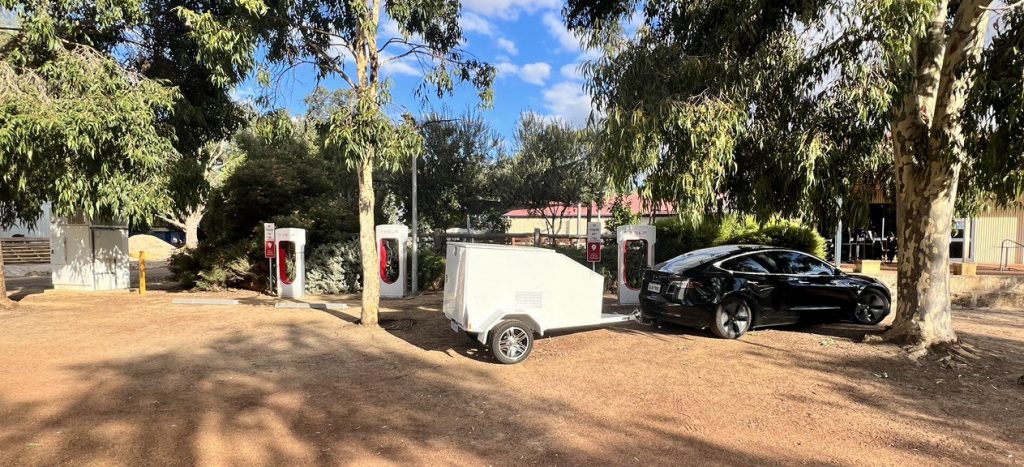
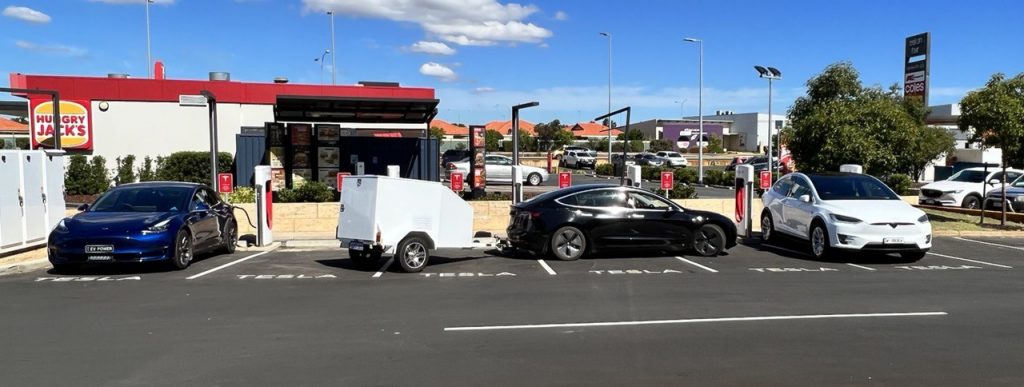
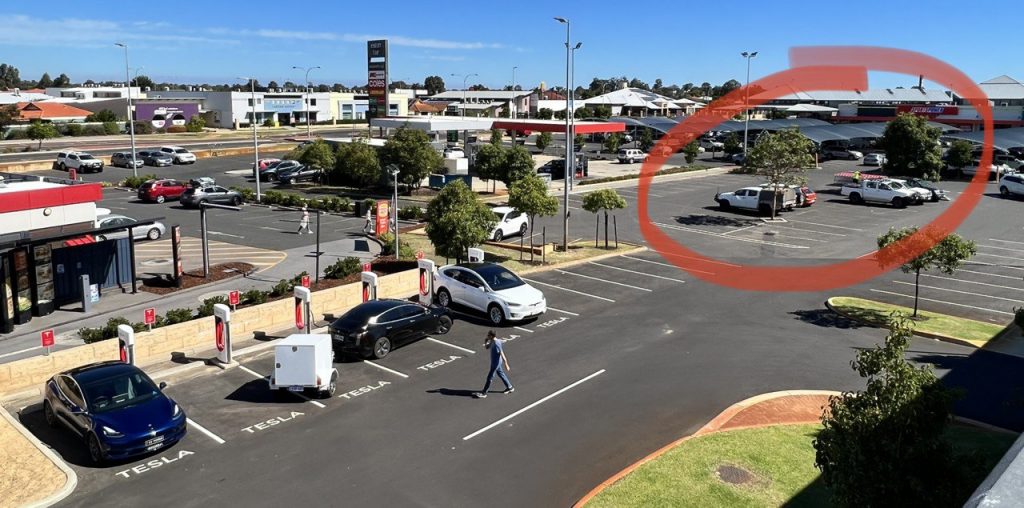
As the photo above shows, had the Superchargers been installed at the location indicated by the red marking, the stalls could have been configured in a ‘drive-through’ formation. As the graphic illustrates, and as summarised in the table below, a drive-through configuration can accommodate the same number of non-towing EVs as the usual reverse park configuration shown in figures #1 and #2, however, while a reverse park configuration can only accommodate a maximum of one towing vehicle and two non-towing cars, a drive-through layout such as the one in figure #7, can accommodate up to four non-towing vehicles in addition to one towing vehicle.

While not as efficient as the drive-through design, a parallel park layout can still work for towing EVs. We were lucky to find one such charger in Nannup, Western Australia where we had a very convenient seamless charging experience.
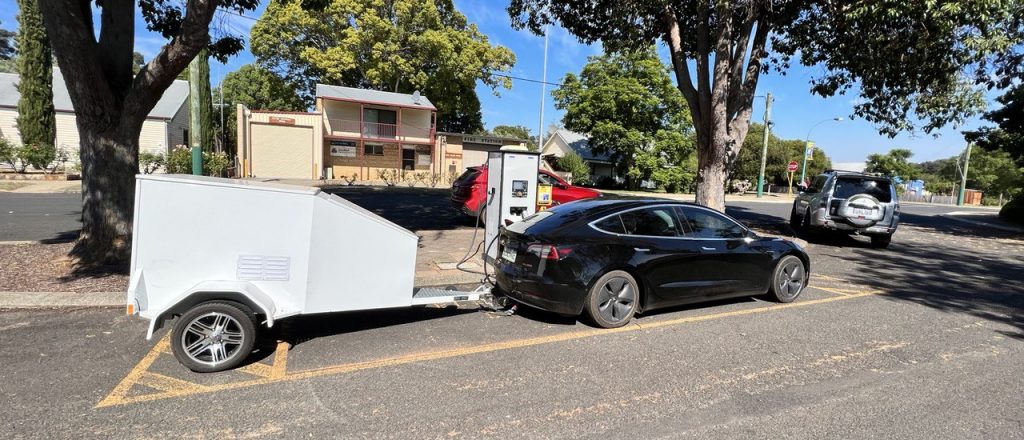
The reverse park, parallel park and the drive-through configurations constitute the three main layouts, however, these can be combined into numerous variations to suit a specific site, such as illustrated below.

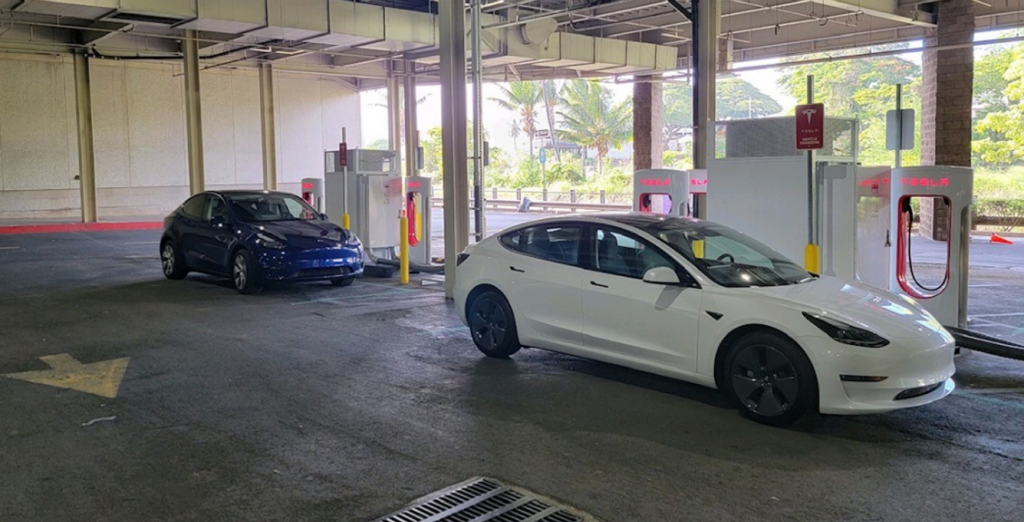
Naturally, one solution open to towing EVs is to unhitch the trailer, boat, caravan or horse float in a nearby parking space and to then drive the EV to the charger and plug-in as per normal. An ICE car towing a trailer doesn’t have to unhitch just to fill up with petrol or gas and an EV driver shouldn’t have to do so either, as there can be many disadvantages to this approach including the following:
As outlined above, unhitching a trailer, boat, caravan or horse float just to charge, is unnecessarily time consuming and there are numerous impracticalities and inconveniences to this approach and as mentioned earlier, an ICE car towing a trailer doesn’t need to unhitch just to fill-up, therefore, neither should an EV.
A drive-through configuration such as that found in most petrol / gas stations is the logical solution having the following benefits:
As noted earlier, due to economic constraints in augmenting the existing network infrastructure, and as not all sites are the same, naturally, every site won’t lend itself to a drive-through layout, however, in situations where it is possible to achieve a more logical, more efficient, user-friendly design at little or no additional cost, a better thought-out configuration such as the angled drive-through design should be considered.
Below are some examples of tow-friendly Tesla Supercharger configurations:
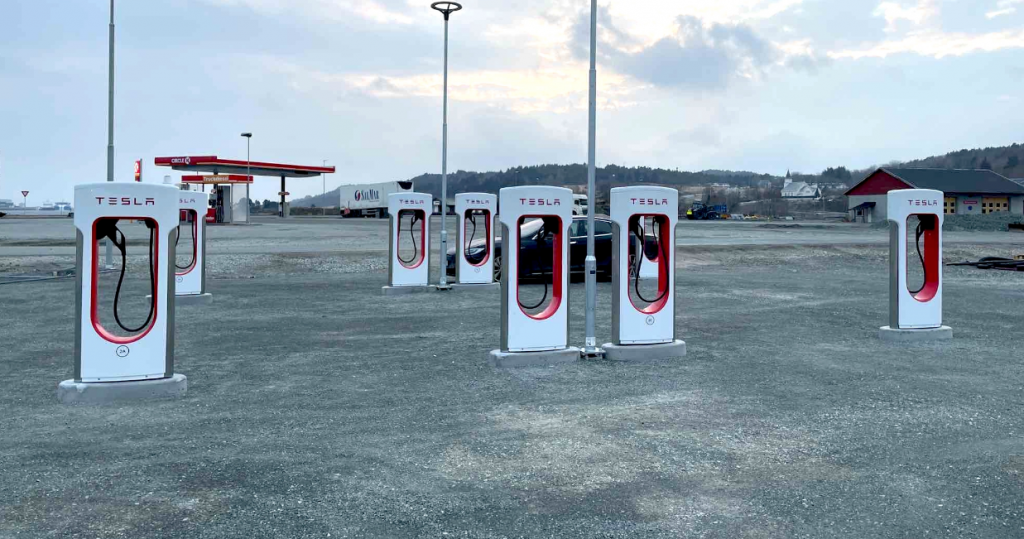

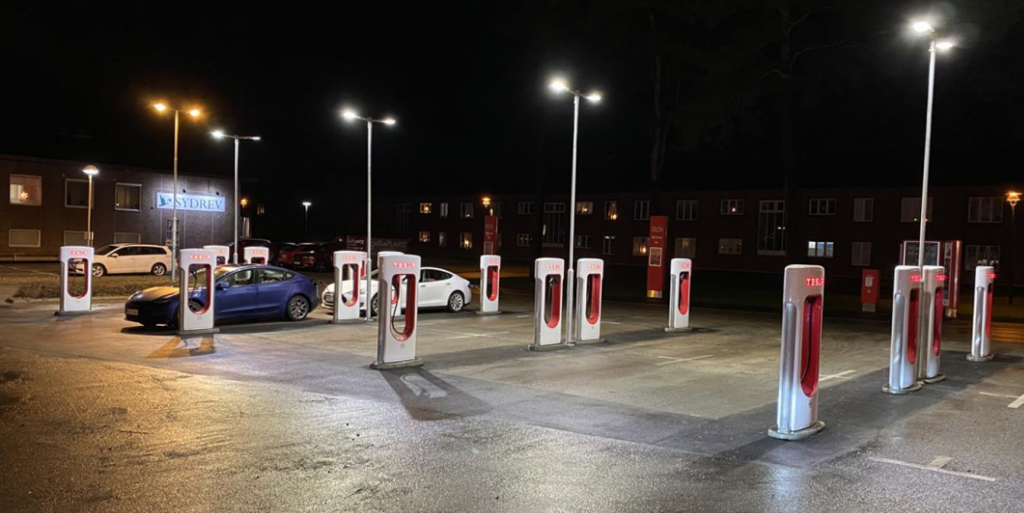
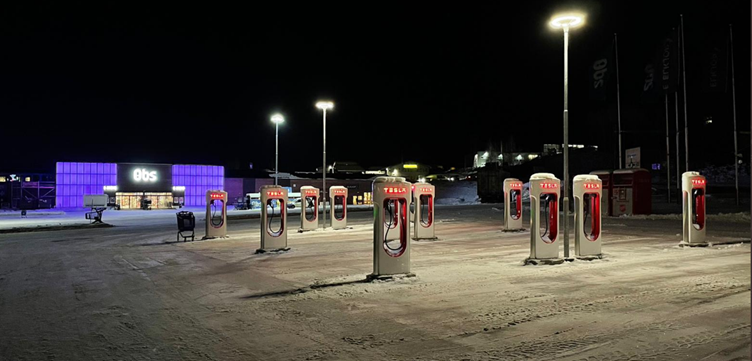
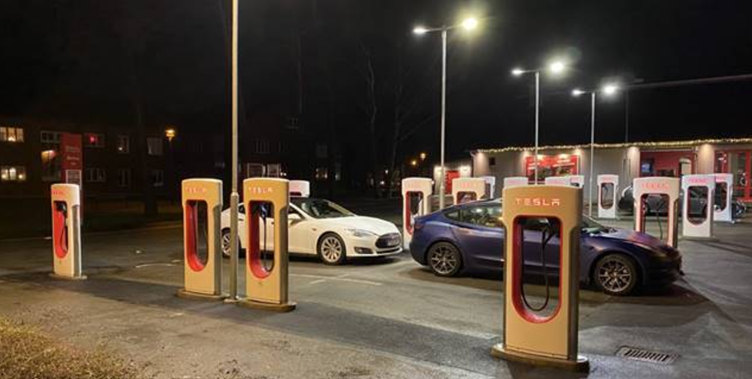
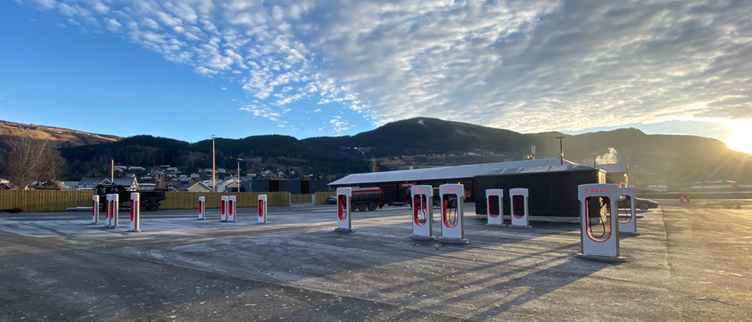
Most petrol and gas stations have a convenient drive-through design so why should EV owners have to reverse-park against a curb to plug-into an EV charger? From the perspective of an EV owner towing a trailer, the current reverse-park layout is a major oversight requiring immediate rectification.
This concludes part one of a two-part article. Part two can be found here: https://www.tocwa.org.au/2022/04/20/major-parts-of-australia-in-desperate-need-of-reliable-fast-dc-chargers/
[This article was edited on 22nd of April 2022, to add the second (right) image of the Morongo Trail Cabazon Supercharger in California which better shows the dedicated charging stalls for towing EVs. Thank you to Steve @rexjamo for supplying this photo.]

Pete Petrovsky is an active TOCWA (Tesla Owners Club of Western Australia) committee member and a long-time EV enthusiast. He placed a $6,000 deposit for a Model X (#39) in 2014 but when it came to taking delivery he couldn’t justify the cost, so instead, he and his wife decided to buy two PHEVs and wait for the Model 3. In March of 2016 they bought the Holden Volt and a couple of weeks later the Mitsubishi Outlander PHEV, and on the day it was unveiled, Pete ordered the Model 3. After selling the Outlander, in September 2019, Pete received his long awaited first Tesla, a Model 3 Performance. Despite still loving their Volt, Pete and his wife took delivery of their second Model 3 in December 2021. In his spare time, Pete also runs the ‘Tesla Ahead of the Curve’ YouTube channel and is also a long-term Tesla shareholder.
Having recently come back from a 1,000km round trip towing a trailer behind our Tesla Model 3, I’ve learned two things. Firstly, we need a denser network of reliable fast DC chargers in country Australia but importantly we also need to rethink EV charger design and configurations to allow EVs towing trailers, caravans and boats to also be able to charge. This is part two of a two-part article. I address the need for more efficiently designed EV charger configurators in part one.
With almost 70,000kms on the clock in a little over two and a half years, I drive almost twice as much as the Australian pre-Covid average of about 15,000km a year. As I can charge at home, if I exclude long road trips, I’ve never come anywhere to even close to running out of the Model 3 Performance real world city range of approximately 500km (the car is rated at 530km at the WLTP standard).
That said, while our M3P, may have considerably more than sufficient range around town, once you add a persistent headwind, higher average speeds, bigger payload, fewer opportunities for regenerative braking, a rougher coarse road, rain, colder weather, HVAC use, not to mention a fully loaded trailer, the usually more than sufficient 450-500km range starts to take a considerable dive to closer to 250km or less. While in theory, the 250km is more than enough to still stay within the recommended no more than two-hour drive legs in between at least 15-minute rest breaks, in practice, things become a little more challenging when EV chargers are more than 250km apart or in our case, when the only DC charger along a 320km route ceases to work.
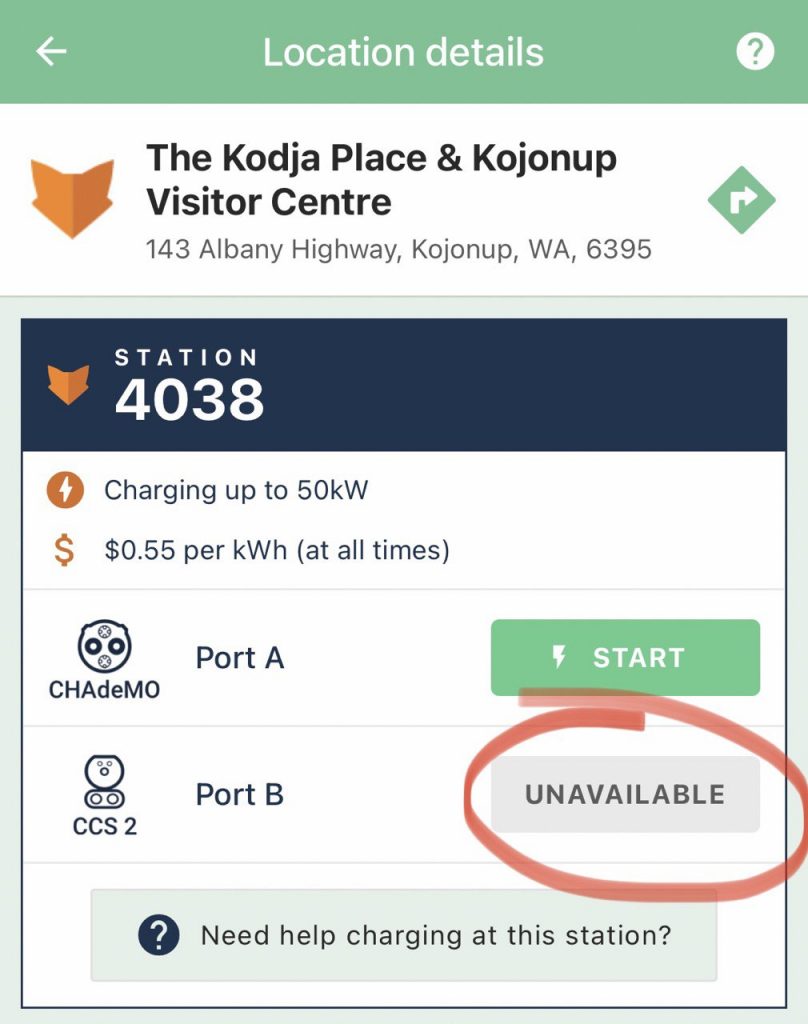
While a large battery with increased range would obviously help on the occasional long road trips, at all other times, it would add unnecessary extra weight thereby reducing efficiency and handling while increasing the embodied energy, not to mention the price and hence the economic payback period of the car. A better solution is a denser network of reliable easy-to-use fast DC chargers particularly in country areas.
Unfortunately, the coverage of most EV charging networks in Australia is still very limited and the reliability of non-Tesla chargers is far from optimal.
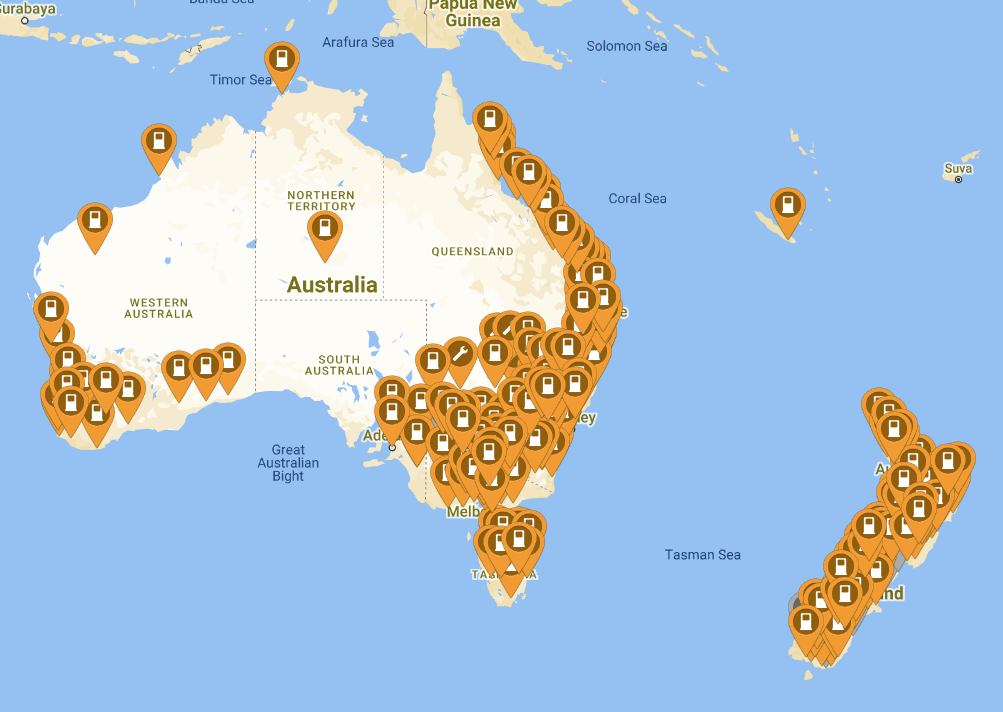
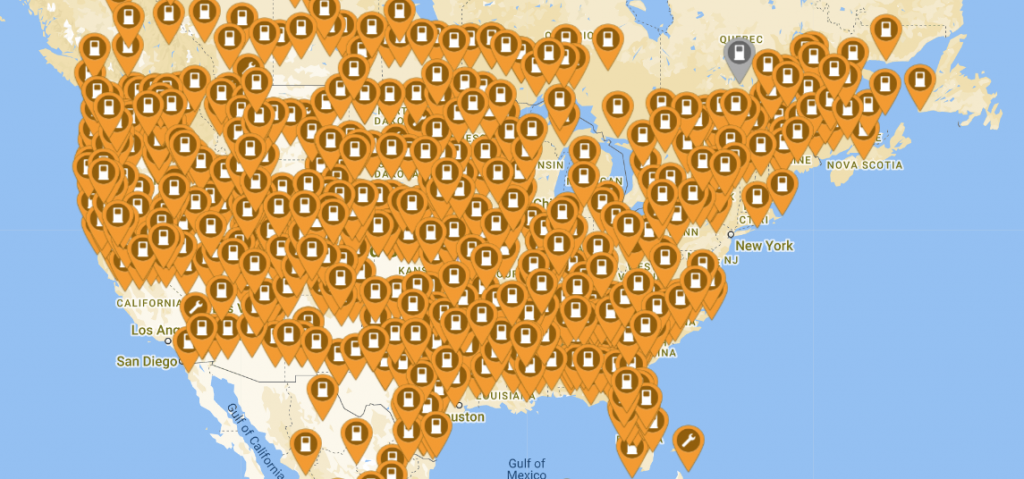
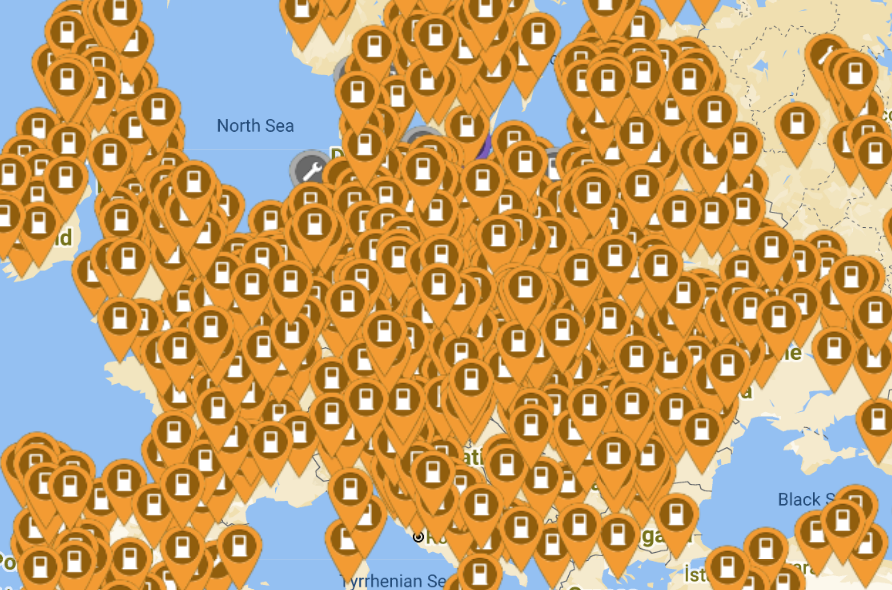
While Tesla can boast near-perfect Supercharger reliability and the largest EV charging network in the world, the fact is that we still have large gaps in many parts of country Australia, particularly in WA, NT, SA and northern and inner parts of QLD. As demand for Tesla Superchargers is only increasing around the globe, jurisdictions with lacklustre EV policies understandably rank lower on the priority list. Not only do we have no real national EV policy to speak of but with Australia becoming a dumping ground for dirty and inefficient cars, due to our lack of vehicle and fuel emission standards, it is no surprise that Australia is not a high priority.

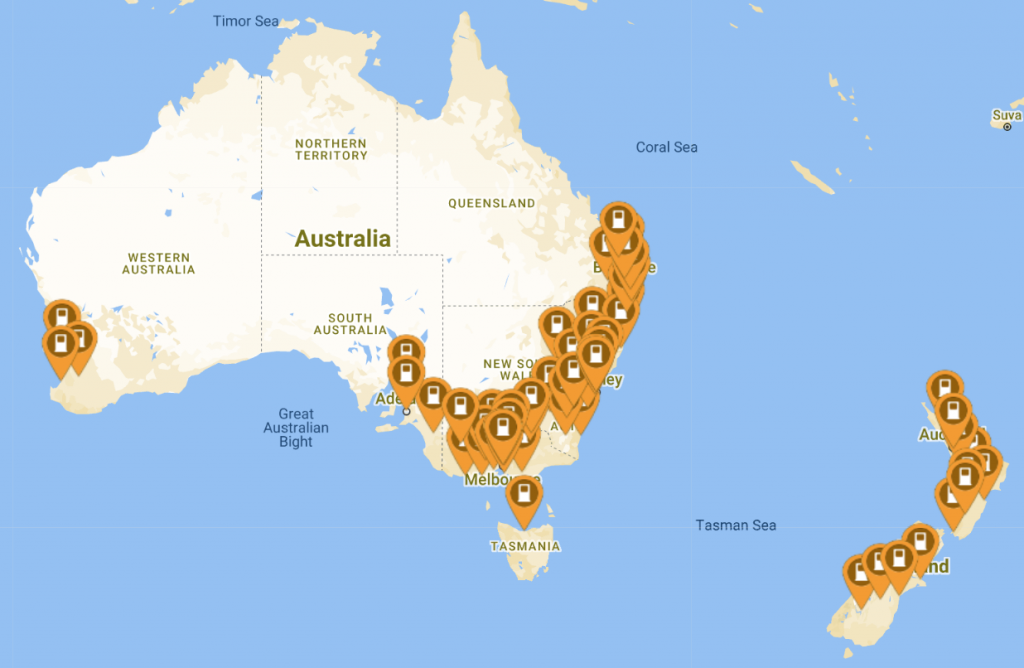
Australia no longer manufactures the Commodore, the Falcon or any other mass-market cars, so we have no choice but to buy what the world sells. Apart from a couple of exceptions, with virtually all manufacturers ceasing the production of fossil fuel vehicles either by 2025 or before the end of this decade, our DC charging networks will need to expand, fast.
(This was part one of a two-part article. Part two is available here: https://www.tocwa.org.au/2022/04/20/rethinking-the-design-of-ev-charger-configurations/

Pete Petrovsky is an active TOCWA (Tesla Owners Club of Western Australia) committee member and a long-time EV enthusiast. He placed a $6,000 deposit for a Model X (#39) in 2014 but when it came to taking delivery he couldn’t justify the cost, so instead, he and his wife decided to buy two PHEVs and wait for the Model 3. In March of 2016 they bought the Holden Volt and a couple of weeks later the Mitsubishi Outlander PHEV, and on the day it was unveiled, Pete ordered the Model 3. After selling the Outlander, in September 2019, Pete received his long awaited first Tesla, a Model 3 Performance. Despite still loving their Volt, Pete and his wife took delivery of their second Model 3 in December 2021. In his spare time, Pete also runs the ‘Tesla Ahead of the Curve’ YouTube channel and is also a long-term Tesla shareholder.
Social media can be very challenging day after day, handy for staying in touch with distant friends and relatives but an often a battlefield of mistruths, aggravation and division.
Like many other discussion topics, a mention of Electric Vehicles brings out a vast amount of opinions for and against, you have three main choices to deal with it:
There are two main types providing negative comments against EVs, those that just don’t know any better and are just repeating information they’ve seen/heard elsewhere without fact checking and those that know full well the information they’re providing is misleading/false. The second type are generally repeat offenders as they have skin in the game so to speak.
The 21st Century is a world of self interest, tell them what they want to hear.

With petrol and diesel prices at the pump rising to astronomic levels are you thinking of switching to an electric vehicle?
If so, you’re not alone. As can be seen from the Google Trends search data below, Australians are increasingly thinking about making the switch to EVs.

There is a long list of reasons to switch to an EV but if it’s the cost of owning and running a car that’s your main motivator, you’ll want to know how the figures compare to your current car and you’ll also be interested to know how this may change as petrol prices rise or fall.
The chart below illustrates the relationship between fuel prices and how much better off you are likely to be, owning what is by far Australia’s most popular EV, a Tesla Model 3 versus owning an average Australian internal combustion engine (ICE) car. The calculations are based on a short 3-year period of ownership but the longer you hold on to the Model 3 the better off you’ll be.

As the chart above shows, at a petrol price of $2.00 per litre, you’ll be at least $14,193 better off with the Model 3 after 3 years, but even if the petrol price was to halve to $1.00 a litre you would still be $9,198 in front. Incredibly, even if fuel was completely free, the Model 3 would still put you in front to the tune of $4,203 over 3 years. In fact, the petrol price would need to be at a negative 84 cents for you to be at break-even point. Yes, you read that correctly, the petrol station would need to pay you $84 for every 100 litres of fuel you pump into your car and owning the Model 3 for just three years would still put you a dollar in front.
In case you’re wondering what is the affect of the cut in the fuel excise tax announced in the federal budget on 29th of March, it would work out to $1,099 over a 3-year period but the Treasurer has announced it will only be put in place for 6 months, so it works out to about $183. Therefore, the difference is a benefit of $14,093 vs a benefit of $13,910 for the M3 over an ICE car, but that of course assumes that fuel prices don’t go up any further.
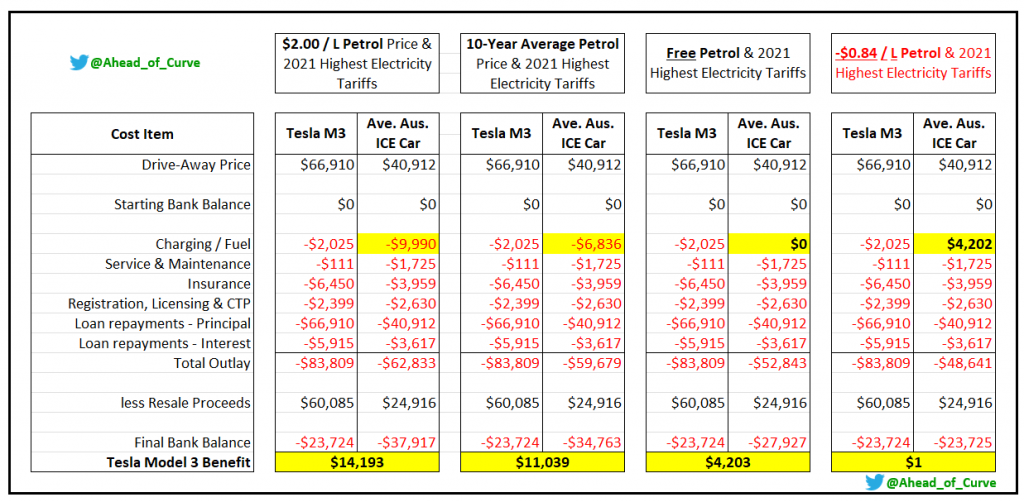
The table above provides some insight into the calculations which are based on Australian averages and if anything, are a little too kind towards the petrol car. For example, it assumes that the Tesla Model 3 is charged from the electricity grid 100% at average standard electricity tariffs. Once you purchase an EV, you’ll quickly realise there are various EV-friendly lower cost tariffs offered by electricity retailers. Furthermore, most EV owners charge their cars using a solar PV system which, can produce more than enough power to cover the electricity usage of an average Model 3 several times over. For example, assuming a typical residential system with a 6.6kW solar panel array and a 5kW inverter, one would expect it to produce anywhere from 23-24kWh a day in the least sunny parts of Australia such as in Melbourne or Hobart to around 26kWh in Sydney, 28kWh in Adelaide or Brisbane or about 29kWh a day in Australia’s sunniest cities like Perth or Darwin. A Model 3 driving the average amount driven by an Australian car will use between 6 and 6.5kWh a day. Therefore, a typical residential solar system in Perth will produce enough free energy to power four and a half Model 3s and even in Melbourne a typical solar PV system will power about 3.75 M3s leaving surplus energy for another EV and the rest of the home.
The great benefit of solar power is its predictable cost. With the cost of petrol and diesel being based on fluctuating prices determined by world oil markets, it’s anyone’s guess what the prices may be at the bowser in the next few weeks let alone in the next few years, making household or business budgeting a challenge. In contrast, once an appropriately designed solar PV system has paid for itself, usually in about two to five years, the price of its solar generated electricity is exactly zero as the power it generates comes from the sun which has cost the exact same amount of zero cents for the last 4.603 billion years and will likely cost the same for a further 5-7 billion years. (Some will argue that there is an opportunity cost in the form of foregone feed-in-tariffs, however, these have been declining over the years and they generally represent only about a quarter of a standard residential electricity tariff.)
While it’s hard to argue with the economics of owning Australia’s most popular electric vehicle, there are many other important aspects of car ownership. I would argue that when it comes to an EV such as the Model 3 or Model Y, there are only two factors that one could argue to be inferior to a petrol car. These are the upfront cost in the form of the sticker price and the time to refuel, however, as you will see these are largely irrelevant in the vast majority of situations for most Aussie car owners.
As I hope I have made evident in the first part of this article, it doesn’t make financial or any other sense to look at a car’s sticker price in isolation. One should take all the costs of car ownership into account and make decisions based on the difference in the total cost of ownership because if you don’t you could fall into the trap of buying a $50 printer only to later realise the print cartridges will cost you $100 each. With that said, the only time the sticker price becomes relevant is if one is unable to stretch the budget or the loan. While I would never advocate for anyone buying a car they can’t afford, there is a phenomenon called the “Tesla Stretch” where aspiring Tesla owners have stretched their budgets and / or borrowing capacity to afford their dream car. The Tesla Owners Club of Western Australia (TOCWA) conducted a recent poll on its Facebook page which which showed that almost 88% of the 139 respondents spent more on their Tesla than on their previous car with a staggering 69% paying $30,000 or more.


As with the sticker price, the time to refuel argument is only relevant in rare circumstances. With a highway range of approximately 350 – 400km the Tesla Model 3 RWD has the shortest range of any Tesla but even with this model the time to refuel will only be a factor on long road trips with legs of more than three and a half to four hours at a time. It should be noted that to avoid driver fatigue the recommendation is to have a 15-minute break at least every two hours. At all other times, an EV is actually much more convenient than a petrol or diesel vehicle because, similar to a smartphone, you recharge it when you’re at home which means that most of the time you hop in the Tesla you’ll have about 10 days of driving waiting and ready to go without the inconvenience of spending time searching for and driving to a reasonably priced service station, then standing there with your hand on the bowser inhaling the petrol fumes for five minutes, then lining up to pay and so on.

Having focused on the two factors where one could argue than an EV is inferior to an ICE car, below is a list of some of the other factors where Australia’s most popular EV excels including:

Furthermore, unlike most cars which are the best they will ever be the day they are driven off the dealership lot, the Model 3 continually improves via mostly free over-the-air (OTA) software updates.
Does this mean that a Model 3 or a Tesla for that matter is the right EV or even the right car for everyone and for every situation? No, of course not, but it’s hard to deny that it presents a very compelling proposition and once Full Self-Driving (FSD) becomes a reality in the not-too-distant future, driving anything other than a Tesla may as Elon Musk explained feel like riding a horse. Furthermore, with there being no end in sight to the volatility in fuel prices Elon may have also have been right when he said that it would be “financially insane to buy anything other than a Tesla”.
(This article was first published on 26th of March. It was edited on 29th of March with the only change made being the insertion of the paragraph above the saving table relating to the fuel excise cut.)

Pete Petrovsky is an active TOCWA (Tesla Owners Club of Western Australia) committee member and a long-time EV enthusiast. He placed a $6,000 deposit for a Model X (#39) in 2014 but when it came to taking delivery he couldn’t justify the cost, so instead, he and his wife decided to buy two PHEVs and wait for the Model 3. In March of 2016 they bought the Holden Volt and a couple of weeks later the Mitsubishi Outlander PHEV, and on the day it was unveiled, Pete ordered the Model 3. After selling the Outlander, in September 2019, Pete received his long awaited first Tesla, a Model 3 Performance. Despite still loving their Volt, Pete and his wife took delivery of their second Model 3 in December 2021. In his spare time, Pete also runs the ‘Tesla Ahead of the Curve’ YouTube channel and is also a long-term Tesla shareholder.